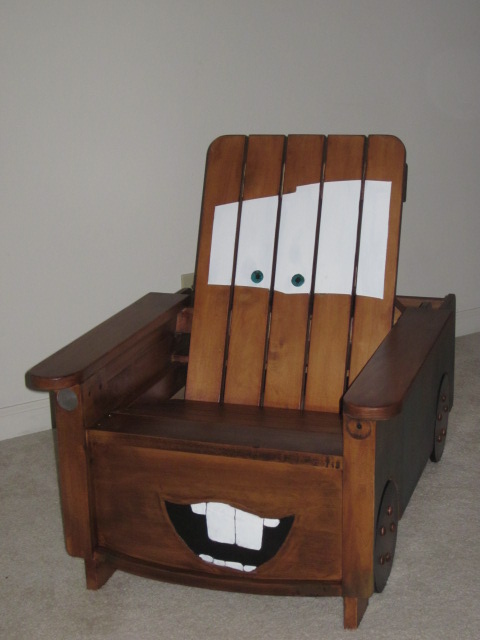Each month I make a newsletter to try to keep every reader motivated and pursuing the art of woodworking. But sometimes I need motivation too. This is where you have been able to help me. This month I want to share with you Keith Mealy’s story of why he does woodworking and how he got started. The following are Keith’s own words.
“After graduating college, it was difficult to start in serious woodworking, living for the next six years in 5 different homes in 4 states and having 2 babies. But I did manage to do a few wood projects with my hand saw, plane, drill, chisel, combo-square, hammer, and a couple of screwdrivers, often in an apartment balcony or storage basement. Along the way, I added a cheap circular saw and jigsaw. This was sort of the epitome of Chad’s “I Can Do That” series.
Finally, after the last move for a while (43 years ago), I slowly rekindled the woodworking that got lit in Jr. High “shop class”. The tools began to get added as needed. Roy Underhill’s program helped me understand more about wood, bought books and magazines, and at the local library, I became known as “the guy who gets books on woodworking” (all pre-internet and YouTube). I also joined and became active in the local woodworking club which both fed my interest and taught me things. For the next 20 or so years, I built a lot of the furniture in my home and added small things like boxes and picture frames. I also did some teaching at local high schools’ adult ed programs and at some local woodworking stores. During that time, I was engineering software products and woodworking was a more tangible and generally a shorter term start-to-finish timeline. I also joked that my woodworking projects were something my mother could understand as opposed to database administration and software product development.
As my three daughters grew, I had them in the shop and they did many projects for 4-H woodworking. They made some nice things and went to the state fair where they also won top awards. Most of those projects they still have in their homes now. While none of them are still active in woodworking, it was enjoyable working with them and I think it instilled in them a sense of accomplishment, deferred gratification, and exposure outside gender stereotypes. Since then, I have stayed active with this program, judging annually at the state fair and sometimes at local county fairs. Once the daughters got married and had their own families, I got more requests for furniture and made many things for them ranging from jewelry boxes to bunk beds to bedroom sets.
After years of my employer’s financial problems, I decided to leave the software industry. I decided that furniture repair would be more suited than custom furniture making. So I got a franchise with a national company and began doing in-home and in-warehouse repairs and in-shop refinishing. I worked for local independent furniture stores, moving and “last mile” delivery companies, national repair service companies, and individual consumers. Work varied from touch-ups for new furniture with transit or showroom damage to moving repairs to consumer damage in the home. There was also repair for “structural damage” and because of the franchise, repairs, and spot-cleaning to upholstered furniture. One of my friends told me about a local chair repair company that was selling one of their locations and wondered if I was interested. I decided that I enjoyed the wide variety and challenges and could not see going to the shop every day and deciding “which 8 chairs am I going to re-glue today?” People asked me if I missed the software life and I responded that I don’t miss the meetings at all and it’s just a different type of analysis and problem-solving.
That work carried on until a couple of years ago, when I decided to retire. For the last 8 years, I have been doing volunteer work at a local furniture bank that supplies furniture to families coming out of homelessness for various reasons. We have gone from a crowded workspace on one workbench and a banquet table to a new location where we have a fairly well-equipped shop. A small number of woodworking club members are the core volunteers and we (now that COVID is subsided) have outside volunteers that we mentor a couple of mornings a month. So far this year we have made over 700 tables and did 60 in the last 2 sessions. I also get called on to repair their donated furniture.
Two of my grand-daughters and their mother (my daughter) are involved in a local youth theater group. I help with set construction for about 3 months before each of the semi-annual shows. The most recent show had 55 actors and about 10 major set pieces including a 14-foot tall “volcano” and 12-foot tall “Foley” tower. Safety for the kids and “looking good from the fourth row” are our major goals there.”
It’s amazing to me how Keith has not only developed his woodworking skills, but he also made a business from it, and most importantly, he shared his knowledge and skills with his kids, grandkids, and now all of you. I hope Keith’s story inspired you as much as it did for me.
Chad Stanton -9-30-2022





